 People have been eating eggs for centuries. Records as far back as 1400 BC show that the Chinese and Egyptians raised birds for their eggs. The first domesticated birds to reach the Americas arrived in 1493 on Christopher Columbus' second voyage to the New World. Most food stores in the United States offer many varieties of chicken eggs to choose from — white, brown, organic, cage free, vegetarian, omega-3 fatty acid enriched, and more. The bottom line is that buying eggs is not as simple as it used to be because more choices exist today. This 4-page fact sheet will help you understand the choices you have as a consumer, so you can determine which variety of egg suits you and your family best. Written by Jeanine Beatty, Karla Shelnutt, and Gail Kauwell, and published by the UF Department of Family Youth and Community Sciences, April 2013.
People have been eating eggs for centuries. Records as far back as 1400 BC show that the Chinese and Egyptians raised birds for their eggs. The first domesticated birds to reach the Americas arrived in 1493 on Christopher Columbus' second voyage to the New World. Most food stores in the United States offer many varieties of chicken eggs to choose from — white, brown, organic, cage free, vegetarian, omega-3 fatty acid enriched, and more. The bottom line is that buying eggs is not as simple as it used to be because more choices exist today. This 4-page fact sheet will help you understand the choices you have as a consumer, so you can determine which variety of egg suits you and your family best. Written by Jeanine Beatty, Karla Shelnutt, and Gail Kauwell, and published by the UF Department of Family Youth and Community Sciences, April 2013.
http://edis.ifas.ufl.edu/fy1357
Category: Families & Consumers
Outbreaks of Foodborne Illness Associated with Common Berries, 1983 through May 2013
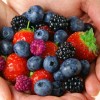 This 9-page fact sheet serves as a reference for anyone concerned about the safety of fresh and frozen berry products. Providing information for those who grow, harvest, process, transport, and serve berries to consumers is important for improving science-based food safety programs for the entire supply chain. Table 1 lists the reported outbreaks of foodborne illness from 1983 through May 2013 in which specific berries and mixed berries have been identified as the food vehicle. Table 2 lists the reported outbreaks in which berries were likely the food vehicle.
This 9-page fact sheet serves as a reference for anyone concerned about the safety of fresh and frozen berry products. Providing information for those who grow, harvest, process, transport, and serve berries to consumers is important for improving science-based food safety programs for the entire supply chain. Table 1 lists the reported outbreaks of foodborne illness from 1983 through May 2013 in which specific berries and mixed berries have been identified as the food vehicle. Table 2 lists the reported outbreaks in which berries were likely the food vehicle.
Written by M. Palumbo, L. J. Harris, and M. D. Danyluk, and published by the UF Department of Food Science and Human Nutrition, November 2013.
http://edis.ifas.ufl.edu/fs232
Drying and Preserving Plant Materials for Decorative Uses
 Dried and preserved plant materials are popular for home decor. Dried arrangements can preserve the graceful lines, textures, and colors of flowers and foliage with a subtle and gently aged appearance. This 14-page fact sheet was written by Sydney Park Brown, Patricia White, Benny Tjia, Marion R. Sheehan, and published by the UF Department of Environmental Horticulture, November 2013.
Dried and preserved plant materials are popular for home decor. Dried arrangements can preserve the graceful lines, textures, and colors of flowers and foliage with a subtle and gently aged appearance. This 14-page fact sheet was written by Sydney Park Brown, Patricia White, Benny Tjia, Marion R. Sheehan, and published by the UF Department of Environmental Horticulture, November 2013.
http://edis.ifas.ufl.edu/ep004
Eastern Bloodsucking Conenose, Triatoma sanguisuga (LeConte) (Hemiptera: Reduviidae: Triatominae)
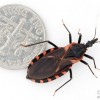 The eastern bloodsucking conenose belongs to the subfamily Triatominae, known as the kissing bugs. Despite their affectionate vernacular name, they are particularly threatening “assassin bugs” who require blood meals to survive and reproduce. They are a known vector of American trypanosomiasis (or Chagas Disease) in South America, a debilitating illness caused by the parasite Trypanosoma cruzi. This disease is a problem in South and Central America and has been detected in the United States, but has not been found in Florida. This 4-page fact sheet was written by John L. Capinera, and published by the UF Department of Entomology and Nematology, November 2013.
The eastern bloodsucking conenose belongs to the subfamily Triatominae, known as the kissing bugs. Despite their affectionate vernacular name, they are particularly threatening “assassin bugs” who require blood meals to survive and reproduce. They are a known vector of American trypanosomiasis (or Chagas Disease) in South America, a debilitating illness caused by the parasite Trypanosoma cruzi. This disease is a problem in South and Central America and has been detected in the United States, but has not been found in Florida. This 4-page fact sheet was written by John L. Capinera, and published by the UF Department of Entomology and Nematology, November 2013.
http://edis.ifas.ufl.edu/in1018
Shopping for Health: Foods with Added Fiber
 Fiber in foods consists of carbohydrates that cannot be digested. Although many foods naturally contain fiber, high-fiber ingredients are commonly added to foods to increase their fiber content. Fiber ingredients may be added to foods for health or functional reasons. This 3-page fact sheet was written by Wendy Dahl, and published by the UF Department of Food Science and Human Nutrition, November 2013.
Fiber in foods consists of carbohydrates that cannot be digested. Although many foods naturally contain fiber, high-fiber ingredients are commonly added to foods to increase their fiber content. Fiber ingredients may be added to foods for health or functional reasons. This 3-page fact sheet was written by Wendy Dahl, and published by the UF Department of Food Science and Human Nutrition, November 2013.
http://edis.ifas.ufl.edu/fs235
Managing Stress During the Holidays
 When we think of the holidays, we often think about family, togetherness, giving, and celebrating. While the holiday season should be a time of enjoyment, there are many events associated with the season that can cause stress. This 3-page fact sheet was written by Heidi Radunovich, and published by the UF Department of Family Youth and Community Sciences, November 2013.
When we think of the holidays, we often think about family, togetherness, giving, and celebrating. While the holiday season should be a time of enjoyment, there are many events associated with the season that can cause stress. This 3-page fact sheet was written by Heidi Radunovich, and published by the UF Department of Family Youth and Community Sciences, November 2013.
http://edis.ifas.ufl.edu/fy1404
Raising Healthy Children: Shellfish Allergies
 Learning that your child has a shellfish allergy can be scary. But having a plan and knowing how to treat and avoid a reaction to shellfish can ease this fear and keep your child safe. This publication explains shellfish allergies and provides information on the symptoms and how to respond if a reaction occurs. There are also tips to make it easier to manage your child’s shellfish allergy at home and away from home.This 4-page fact sheet was written by Kate Bennett, Karla P. Shelnutt, and Gail P. A. Kauwell, and published by the UF Department of Family Youth and Community Sciences, November 2013.
Learning that your child has a shellfish allergy can be scary. But having a plan and knowing how to treat and avoid a reaction to shellfish can ease this fear and keep your child safe. This publication explains shellfish allergies and provides information on the symptoms and how to respond if a reaction occurs. There are also tips to make it easier to manage your child’s shellfish allergy at home and away from home.This 4-page fact sheet was written by Kate Bennett, Karla P. Shelnutt, and Gail P. A. Kauwell, and published by the UF Department of Family Youth and Community Sciences, November 2013.
http://edis.ifas.ufl.edu/fy1402
Home Gardening Food Safety: Washing the Fruits (and Vegetables) of Your Labor Properly
 Having a home garden has become popular recently. It is a great way to enjoy fresh fruits and vegetables—foods that are an important part of a healthy diet. However, just because you have your own garden and control how it is treated does not make the fruits and vegetables you grow safer than those you buy in the store. To reduce the chance of getting sick from foodborne illnesses, you must wash the fruits and vegetables you grow before eating them raw or cooked. This publication helps you learn the proper way to clean your fruits and vegetables so you can enjoy them safely. This 4-page fact sheet was written by Eshani Persaud, Amy Simonne, and Karla P. Shelnutt, and published by the UF Department of Family Youth and Community Sciences, November 2013.
Having a home garden has become popular recently. It is a great way to enjoy fresh fruits and vegetables—foods that are an important part of a healthy diet. However, just because you have your own garden and control how it is treated does not make the fruits and vegetables you grow safer than those you buy in the store. To reduce the chance of getting sick from foodborne illnesses, you must wash the fruits and vegetables you grow before eating them raw or cooked. This publication helps you learn the proper way to clean your fruits and vegetables so you can enjoy them safely. This 4-page fact sheet was written by Eshani Persaud, Amy Simonne, and Karla P. Shelnutt, and published by the UF Department of Family Youth and Community Sciences, November 2013.
http://edis.ifas.ufl.edu/fy1401
The Facts About Applying: Health Care Coverage and the Affordable Care Act
 President Obama signed the Affordable Care Act into law in March 2010, putting in place a set of reforms to health coverage in the United States. For Americans who have health insurance, they do not have to change their current plan under the health care law. However, those who do not have coverage will have the chance to shop for health insurance starting October 1 using the new Health Insurance Marketplace. This publication reviews some common questions about the new health care law and how it will affect citizens. This 3-page fact sheet was written by Meg McAlpine and Martie Gillen, and published by the UF Department of Family Youth and Community Sciences, October 2013.
President Obama signed the Affordable Care Act into law in March 2010, putting in place a set of reforms to health coverage in the United States. For Americans who have health insurance, they do not have to change their current plan under the health care law. However, those who do not have coverage will have the chance to shop for health insurance starting October 1 using the new Health Insurance Marketplace. This publication reviews some common questions about the new health care law and how it will affect citizens. This 3-page fact sheet was written by Meg McAlpine and Martie Gillen, and published by the UF Department of Family Youth and Community Sciences, October 2013.
http://edis.ifas.ufl.edu/fy1394
Choose MyPlate: Enjoy Your Food But Eat Less
 Americans tend to select and consume larger portions than they need, and they don’t always make the best choices either. Part of the secret to maintaining a healthy diet is to know which foods to select and how to balance your intake with the amount of energy your body uses. This publication provides information about which foods make the healthiest contributions to our diets and which to limit. It also provides tips for making it easier to adjust your portions and to enjoy foods while making adjustments to your plate. This 4-page fact sheet was written by Ashley Hamm, Karla P. Shelnutt, and Gail P. A. Kauwell, and published by the UF Department of Family Youth and Community Sciences, November 2013.
Americans tend to select and consume larger portions than they need, and they don’t always make the best choices either. Part of the secret to maintaining a healthy diet is to know which foods to select and how to balance your intake with the amount of energy your body uses. This publication provides information about which foods make the healthiest contributions to our diets and which to limit. It also provides tips for making it easier to adjust your portions and to enjoy foods while making adjustments to your plate. This 4-page fact sheet was written by Ashley Hamm, Karla P. Shelnutt, and Gail P. A. Kauwell, and published by the UF Department of Family Youth and Community Sciences, November 2013.
http://edis.ifas.ufl.edu/fy1400
Healthy Eating: Food Storage Guide
 If you don’t shop for groceries often, you may want to buy food that will last until your next trip to the store. The following storage guidelines for perishable foods will help you decide how much food to buy when you visit the grocery. Keep in mind that safe storage times depend on the condition of the food when you purchase it and your refrigerator temperature and humidity. Check foods often for any signs of spoilage. This 2-page fact sheet was written by Linda B. Bobroff and Jennifer Hillan, and published by the UF Department of Family Youth and Community Sciences, October 2013.
If you don’t shop for groceries often, you may want to buy food that will last until your next trip to the store. The following storage guidelines for perishable foods will help you decide how much food to buy when you visit the grocery. Keep in mind that safe storage times depend on the condition of the food when you purchase it and your refrigerator temperature and humidity. Check foods often for any signs of spoilage. This 2-page fact sheet was written by Linda B. Bobroff and Jennifer Hillan, and published by the UF Department of Family Youth and Community Sciences, October 2013.
http://edis.ifas.ufl.edu/fy699
Healthy Living: Keep Track of Your Blood Pressure
 Every time you take your blood pressure, write down the date and time, the blood pressure measurement, and where it was taken (home, doctor’s office, etc.). Not only that, but include any comments your health care provider made and anything you would like to note, such as how you feel or medications you recently started or stopped. This 2-page fact sheet was written by Linda B. Bobroff and Leigh Ann Martin, and published by the UF Department of Family Youth and Community Sciences, October 2013.
Every time you take your blood pressure, write down the date and time, the blood pressure measurement, and where it was taken (home, doctor’s office, etc.). Not only that, but include any comments your health care provider made and anything you would like to note, such as how you feel or medications you recently started or stopped. This 2-page fact sheet was written by Linda B. Bobroff and Leigh Ann Martin, and published by the UF Department of Family Youth and Community Sciences, October 2013.
http://edis.ifas.ufl.edu/fy662
Understanding the New School Meal Standards
 If you have school-age children, you may have heard that the 2012 school year brought major changes to the meals children eat at school. All meals provided through the School Breakfast and National School Lunch Programs now must be consistent with the USDA’s Dietary Guidelines for Americans. This 6-page fact sheet was written by Jenna Norris, Karla P. Shelnutt, and Gail P. A. Kauwell, and published by the UF Department of Family Youth and Community Sciences, October 2013.
If you have school-age children, you may have heard that the 2012 school year brought major changes to the meals children eat at school. All meals provided through the School Breakfast and National School Lunch Programs now must be consistent with the USDA’s Dietary Guidelines for Americans. This 6-page fact sheet was written by Jenna Norris, Karla P. Shelnutt, and Gail P. A. Kauwell, and published by the UF Department of Family Youth and Community Sciences, October 2013.
http://edis.ifas.ufl.edu/fy1396
Eating Defensively: The Nutrition and Food Safety Benefits of Cooked Produce
 Current nutrition trends such as the “raw food diet” may lead consumers to believe that raw leafy vegetables are more nutritious than cooked vegetables, despite research showing that cooked vegetables make important nutritional contributions. This publication describes the nutrient retention and quality of cooked vegetables, explains why cooking vegetables is appropriate for consumers with food safety concerns, and provides tips for preparing cooked vegetables. This 4-page fact sheet was written by Morgan Dehnard, Amy Simonne, and Gail P. A. Kauwell, and published by the UF Department of Family Youth and Community Sciences, October 2013.
Current nutrition trends such as the “raw food diet” may lead consumers to believe that raw leafy vegetables are more nutritious than cooked vegetables, despite research showing that cooked vegetables make important nutritional contributions. This publication describes the nutrient retention and quality of cooked vegetables, explains why cooking vegetables is appropriate for consumers with food safety concerns, and provides tips for preparing cooked vegetables. This 4-page fact sheet was written by Morgan Dehnard, Amy Simonne, and Gail P. A. Kauwell, and published by the UF Department of Family Youth and Community Sciences, October 2013.
http://edis.ifas.ufl.edu/fy1395
An Overview of Life Insurance
 The primary purpose for buying life insurance is to protect the people who depend on you. A life insurance policy can help to ensure your family’s financial needs are met even after your untimely death. Life insurance can also provide a way to leave a cash gift to your spouse, children, grandchildren, or charities. Once you decide to buy a life insurance policy, you will have a few decisions to make. You will need to select among the different types of life insurance, decide on a dollar amount, and name your beneficiaries. In this publication, you will learn about the different types of life insurance and the ways to determine the amount of life insurance you may need. This 4-page fact sheet was written by Lisa Leslie and Martie Gillen, and published by the UF Department of Family Youth and Community Sciences, October 2013.
The primary purpose for buying life insurance is to protect the people who depend on you. A life insurance policy can help to ensure your family’s financial needs are met even after your untimely death. Life insurance can also provide a way to leave a cash gift to your spouse, children, grandchildren, or charities. Once you decide to buy a life insurance policy, you will have a few decisions to make. You will need to select among the different types of life insurance, decide on a dollar amount, and name your beneficiaries. In this publication, you will learn about the different types of life insurance and the ways to determine the amount of life insurance you may need. This 4-page fact sheet was written by Lisa Leslie and Martie Gillen, and published by the UF Department of Family Youth and Community Sciences, October 2013.
http://edis.ifas.ufl.edu/fy1393
Preventing Foodborne Illness: E. coli O157:H7
 Escherichia coli is a bacterium found in the digestive system of healthy humans and animals and transmitted through fecal contamination. There are hundreds of known E. coli strains, with E. coli O157:H7 being the most recognized. This enterohemorrhagic E. coli (or EHEC) strain is responsible for an estimated 63,153 cases of infection and 20 deaths in the United States annually, and causes approximately $255 million in losses each year. E. coli are found everywhere in the environment but mostly occupy animal surfaces and digestive systems, making it important to thoroughly wash anything that comes into contact with these surfaces. This 5-page fact sheet was written by Keith R. Schneider, Renée Goodrich Schneider, Michael A. Hubbard, and Alexandra Chang, and published by the UF Department of Food Science and Human Nutrition, October 2013.
Escherichia coli is a bacterium found in the digestive system of healthy humans and animals and transmitted through fecal contamination. There are hundreds of known E. coli strains, with E. coli O157:H7 being the most recognized. This enterohemorrhagic E. coli (or EHEC) strain is responsible for an estimated 63,153 cases of infection and 20 deaths in the United States annually, and causes approximately $255 million in losses each year. E. coli are found everywhere in the environment but mostly occupy animal surfaces and digestive systems, making it important to thoroughly wash anything that comes into contact with these surfaces. This 5-page fact sheet was written by Keith R. Schneider, Renée Goodrich Schneider, Michael A. Hubbard, and Alexandra Chang, and published by the UF Department of Food Science and Human Nutrition, October 2013.
http://edis.ifas.ufl.edu/fs097
Preventing Foodborne Illness: E. coli “The Big Six”
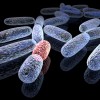 Escherichia coli is a bacterium usually found in the digestive system of healthy humans and animals and transmitted through fecal contamination. There are hundreds of known E. coli strains, with E. coli O157:H7 being the most widely recognized because of the severe illness it causes. In addition to E. coli O157:H7, the U.S. Food and Drug Administration has identified six serogroups (or “strains”), known as the “big six,” which includes E. coli O26, O45, O103, O111, O121, and O145. These are the most commonly seen types of E. coli found in food in the United States that are not O157:H7, and they cause approximately 37,000 cases per year in the United States. This 5-page fact sheet was written by Susanna Richardson, Renée Goodrich Schneider, and Keith R. Schneider, and published by the UF Department of Food Science and Human Nutrition, October 2013.
Escherichia coli is a bacterium usually found in the digestive system of healthy humans and animals and transmitted through fecal contamination. There are hundreds of known E. coli strains, with E. coli O157:H7 being the most widely recognized because of the severe illness it causes. In addition to E. coli O157:H7, the U.S. Food and Drug Administration has identified six serogroups (or “strains”), known as the “big six,” which includes E. coli O26, O45, O103, O111, O121, and O145. These are the most commonly seen types of E. coli found in food in the United States that are not O157:H7, and they cause approximately 37,000 cases per year in the United States. This 5-page fact sheet was written by Susanna Richardson, Renée Goodrich Schneider, and Keith R. Schneider, and published by the UF Department of Food Science and Human Nutrition, October 2013.
http://edis.ifas.ufl.edu/fs233
MiPlato Serie 10 Consejos de Educación en Nutrición
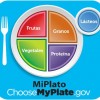 Despues de introducir MiPlato en junio de 2011, el Departamento de Agricultura de los EEUU (USDA) desarolló una seria de hojas informativas para ayudar a los consumidores utilizar los consejos dietéticos de los Pautas Dietéticas de 2010. En 2013, el USDA comenzó proveer las hojas de consejos en Español. Estas hojas de consejos se distribuyen por el UF/IFAS para la facultad de Extensión, los profesionales de salud, y los consumidores. This 33-page fact sheet was written by USDA Centro para Políticas y Promoción de la Nutrición, con una introducción por Linda B. Bobroff, and published by the UF Department of Family Youth and Community Sciences, October 2013.
Despues de introducir MiPlato en junio de 2011, el Departamento de Agricultura de los EEUU (USDA) desarolló una seria de hojas informativas para ayudar a los consumidores utilizar los consejos dietéticos de los Pautas Dietéticas de 2010. En 2013, el USDA comenzó proveer las hojas de consejos en Español. Estas hojas de consejos se distribuyen por el UF/IFAS para la facultad de Extensión, los profesionales de salud, y los consumidores. This 33-page fact sheet was written by USDA Centro para Políticas y Promoción de la Nutrición, con una introducción por Linda B. Bobroff, and published by the UF Department of Family Youth and Community Sciences, October 2013.
http://edis.ifas.ufl.edu/fy1399
Fall Prevention: Lifestyle Factors and Fall Risk
 Many things can cause you to fall. The good news is that you can make some easy changes to decrease your risk of falling. This 2-page fact sheet was written by Linda B. Bobroff and Jennifer Hillan, and published by the UF Department of Family Youth and Community Sciences, October 2013.
Many things can cause you to fall. The good news is that you can make some easy changes to decrease your risk of falling. This 2-page fact sheet was written by Linda B. Bobroff and Jennifer Hillan, and published by the UF Department of Family Youth and Community Sciences, October 2013.
http://edis.ifas.ufl.edu/fy736
Inclusion of Diverse Learners in the Educational System
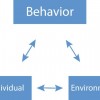 Every student in the United States has the right to an education. But not every student is ready, prepared, or willing to learn. Teachers trying to fully engage students in the learning environment can find it difficult when working with students from diverse backgrounds. Forms of diversity such as socioeconomic status, ethnicity/race, learning style, cognitive ability, gender, and ability to process and store knowledge can cause an “achievement gap” between students. This 4-page fact sheet highlights effective educational strategies for engaging students in the learning environment and assisting in closing achievement gaps. Written by Eric D. Rubenstein and Andrew C. Thoron, and published by the UF Department of Agricultural Education and Communication, July 2013.
Every student in the United States has the right to an education. But not every student is ready, prepared, or willing to learn. Teachers trying to fully engage students in the learning environment can find it difficult when working with students from diverse backgrounds. Forms of diversity such as socioeconomic status, ethnicity/race, learning style, cognitive ability, gender, and ability to process and store knowledge can cause an “achievement gap” between students. This 4-page fact sheet highlights effective educational strategies for engaging students in the learning environment and assisting in closing achievement gaps. Written by Eric D. Rubenstein and Andrew C. Thoron, and published by the UF Department of Agricultural Education and Communication, July 2013.
http://edis.ifas.ufl.edu/wc150